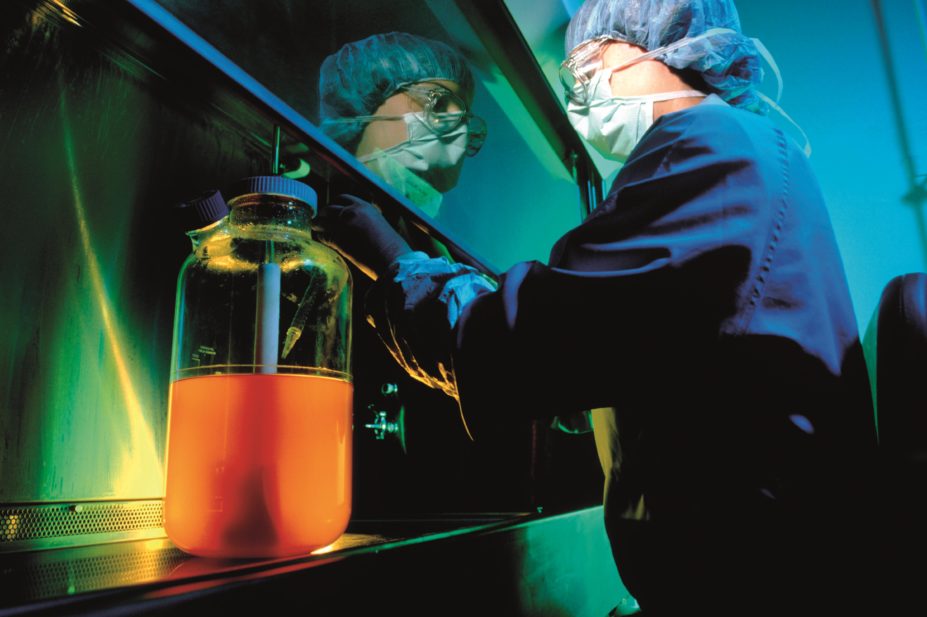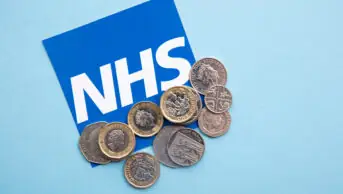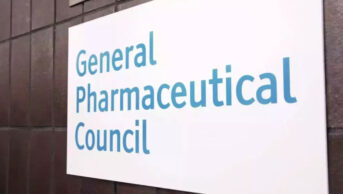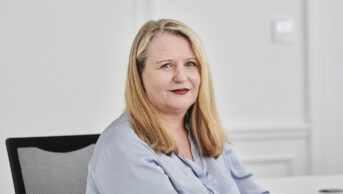
James Holmes / Celltech Ltd / Science Photo Library
Over the past decade there has been a rapid rise in the global biologics market. Around a third of the biopharmaceutical industry research and development (R&D) pipeline comprises biologics. By 2016, 10 of the global top 20 bestselling drugs will be biologics and sales from biological medicines are set to account for 49% of the world’s top one hundred drugs[1]
in terms of revenue by 2018.
Biologics, or biological medicines, are agents derived from a biological and can be composed of sugars, proteins or nucleic acids or even cells and tissue. They have transformed the treatment of life threatening, debilitating diseases.
Such drugs do not come cheap. The average cost per month of treating rheumatoid arthritis with Humira (adalimumab), for example, can be in the region of US$1,800 per month — over 30 times the cost of using the non-biologic treatment Rheumatrex (methotrexate).
Enter biosimilars; copycat biologics that can be marketed after the patents on originator biologics have expired. By fostering competition, biosimilars could bring the benefits of biological medicines to more patients at potentially lower costs. “About US$600m per year is being invested worldwide in genuine biosimilars, with the largest portions going to manufacturing facilities and trials,” says Ronald A Rader, president of the Biotechnology Information Institute, based in Rockville, Maryland. While the first to hit the market were the structurally simpler molecules, “eventually, all biologics are candidates for biosimilars.”
Biopharmaceutical companies are also working on developing next-generation biologics, known as biobetters (also referred to as biosuperiors). These have the potential to improve on existing medicines and further develop the market, benefitting pharmaceutical companies and patients alike.
Guiding the future
In 2005, the European Medicines Agency (EMA) was the first regulatory agency to create biosimilar guidelines that enable faster approvals than for biologics. As of December 2013, 16 biosimilars are authorised: five erythropoietins (EPO) for treating anaemia caused by renal dialysis and chemotherapy; seven granulocyte-colony stimulating factors (G-CSF) for lowered white blood cell counts after chemotherapy; one human growth hormone for growth disorders; a follicle stimulating hormone for fertility disorders; and two anti-tumour necrosis factor (anti-TNF) monoclonal antibodies for autoimmune diseases, such as rheumatoid arthritis and Crohn’s disease[1]
.
And more products are expected to be launched over the next few years as many of Europe’s top selling biologics — worth an estimated US$81bn in global annual sales — face patent expiration[2]
(Herceptin in 2014, Enbrel in 2015, Lucentis in 2016, Humira in 2018, Avastin in 2019).
One of the competitior drugs in development is Amgen’s ABP 215, a biosimilar of Roche’s monoclonal antibody Avastin (bevacizumab). Avastin, which inhibits vascular endotheleial growth factor, is used to treat colorectal and other cancers. Results from a comparative assessment, presented at the European Society for Medical Oncology congress in September 2014, show that ABP 215 — currently in phase III trials — appears to be highly similar to Avastin in multiple sensitive preclinical pharmacologic assessments[3]
.
Several companies — and even some governments — are investing heavily in biosimilar development, according to information, services and technology company IMS Health, which says the competitive field includes global research and development-based pharmaceutical and biotech companies and generics manufacturers.
It is widely expected that direct competition from such biosimilars for the first time will generate significant savings — expectations often based on the savings achieved from small molecule generics, according to the IMS Institute for Healthcare Informatics[4]
.
Biosimilars, however, are not generic medicines.
Small-molecule drugs have single identifiable and stable structures produced by well-controlled chemical reactions involving standard materials. As a result, manufacturing a generic containing the exact copy of the active pharmaceutical ingredient tends to be relatively quick, easy and cheap — taking three to five years and costing less than US$5m, according to the US Federal Trade Commission (FTC). Resulting generics can be as much as 80–90% cheaper than the brand name drugs.
Biologics, on the other hand, have large (200–1,000 times bigger) complex structures and complicated manufacturing processes. Their characteristics can be subtly but significantly altered by slight changes in, for example, the type of expression system and temperature used during manufacturing. This makes it impossible to create an exact copy, so manufacturers of biosimilars must prove that their version is clinically comparable to the originator biologic in terms of safety, quality and efficacy. This involves preclinical evidence of comparable pharmacodynamics and toxicity, clinical trials, manufacturing and post-approval safety monitoring programmes similar to that of the original innovator companies. The cost varies depending on the compound and how many indications it is being investigated for.
Although cheaper and less risky to develop than originator biologics, the FTC estimates the cost of developing a biosimilar to be US$100–200m and take between eight to ten years. The high investment and risk involved is reflected in the relatively small discount — typically 10–35% — on the cost of the originator biologic.
Nevertheless, biosimilars are generating competition and driving down healthcare costs. “Biosimilars have actually generated significant savings for healthcare systems in Europe,” says Sreejit Mohan, head of communications, biopharmaceuticals and oncology injectables at Sandoz, the generic pharmaceuticals division of Novartis, based in Basel, Switzerland.
For instance, the use of biosimilar EPO in Germany between 2007 and 2012 led to over €500m in savings, Mohan points out, and biosimilar filgrastim as a class has overtaken the originators in market share in Europe. “While we might not expect the level of price discounts similar to those observed for traditional chemical generics, biologics tend to have high prices, so even relatively modest price discounts from biosimilars can ultimately generate important savings,” explains Jorge Mestre-Ferrandiz, director of consulting at the Office of Health Economics, a healthcare consultancy firm based in London.
“To an increasing extent, biosimilars are helping payers — particularly in Europe and in some Latin American markets — to contain pharmaceutical spending growth,” says Milena Izmirlieva, senior principal analyst, life sciences, at market analysts IHS. She explains that, while overall pharmaceutical spending continues to increase as a result of growing demand for treatment, the use of biosimilars helps reduce costs for some products. “This allows payers then to dedicate additional money to fund newer biopharmaceutical products coming on to the market or to fund treatment for additional patients.”
Unpredictable future
How the sector will evolve remains uncertain; sales of biosimilars in the United States alone are expected to total between US$1.9–2.6bn by 2015 but could range from US$11–25bn by 2020 — reflecting uncertainty as to how this sector might evolve, according to the OHE[1]
.
The United States, Europe and Japan spend the most on biologics and so represent the most attractive opportunity for biosimilars, according to IMS Health[3]
.
While Europe and Japan already have biosimilar approval pathways operating, the United States — the largest market for biologics — has yet to get going. “Clearly the absence of a regulatory framework in the United States is a major hurdle to the development of biosimilars,” says Daniel Galbraith, chief scientific officer at BioOutsource, based in Glasgow, which has been involved in developing biosimilars of Humira, Avastin, Herceptin, Rituxin and Enbrel.
Biosimilars currently account for less than 0.5% of the market spend on biologics and it is highly unlikely that they can claim 10% of global biologics sales without a strong biosimilars market developing in the United States, according to IMS Health. “Sales on average for biosimilars marketed in Europe are rather pitiful,” agrees Rader. “It’s the US market that will be big, that everyone covets. And many of the major products are still years away from marketability.”
The process in the United States, however, might finally have begun. The US Food and Drug Administration issued new draft guidance in August 2014, and two companies have already completed the filing procedure for biosimilars: Sandoz (for Neupogen [filgrastim]) and South Korea’s Celltrion (for Remicade [infliximab]). Joshua Cohen of the Tufts Center for the Study of Drug Development, based in Boston, Massachusetts, expects five to ten major biosimilars on the US market by 2020.
In the meantime, several factors could limit the long-term success of such drugs. In Europe, the use of biosimilars varies widely between countries and therapy areas. For example, biosimilar penetration for human growth hormone ranges from 2% in Norway to 99% in Poland, while that for EPO ranges from 1% in Croatia to 62% in Bulgaria — differences that reflect variations in local healthcare systems and not just epidemiology and disease factors, say IMS analysts[4]
.
Automatic substitution is an issue. In the case of small-molecule drugs, a pharmacist can substitute a generic for a brand name product without consulting the doctor, as the generic is expected to have the exact same clinical effect on patients. But because small differences or impurities in manufacturing of biosimilars can lead to unexpected and significant immunogenic affects, biosimilars are not treated as interchangeable in the context of the EU biosimilars approval regulations and automatic substitution by pharmacists is prevented in most EU countries. It is not yet clear whether biosimilars will be interchangeable under FDA rules.
“The key issue affecting the development of the biosimilar sector is [for governments] to ensure that high quality comprehensive outcomes data on the effectiveness and safety of biosimilars and originator products is generated to ensure these can be used interchangeably,” says Mestre-Ferrandiz.
A further problem is brand loyalty and a reluctance to switch to biosimilars when able to do so. “Long-term success of biosimilars will depend on generating high-quality medicines and instilling confidence in their use by physicians and patients,” says MacKay Jimeson, director of media relations at Pfizer, based in New York, which has five biosimilar monoclonal antibodies in development (Mabthera/Rituxan [rituximab]; Herceptin [trastuzumab]; Remicade [infliximab]; Avastin [bevacizumab]; and Humira [adalimumab]).
IMS analysts say that pressure from patient advocacy groups could have increasing influence in this regard, as the range of disease conditions treated by biologics increases and the number of patients potentially seeing a benefit grows.
Biobetters
With all the difficulties involved in producing biosimilars, some companies are choosing to develop biobetters, improved next-generation versions of originator biologics.
By modifying an existing molecule and manufacturing process, developers can produce molecules with a slightly different active compound to potentiate clinical effects. Antibodies, for example, can be PEGylated or linked with cyotoxic drugs in order to improve efficacy or alter half-life, improving on both the biosimilar and original biologic. As well as helping patients, improved drugs offer better returns on investment for developers.
There are 452 biobetters currently in development, compared with 655 biosimilars and 1,241 biologics, according to the Biotechnology Information Institute (See ‘Popular biologic reference products with biosimilars and biobetters currently in development’).
Roche’s antibody-drug conjugate Kadcyla (ado-trastuzumab emtansine), for instance, is a biobetter of Roche’s breast cancer monoclonal antibody Herceptin (trastuzumab). Essentially Herceptin with a chemotherapy attached, Kadcyla can target delivery of chemotherapy direct to cancer cells. Kadcyla was approved in both the United States and Europe in 2013, following a phase III trial (TH3RESA) in which Kadcyla nearly doubled delay in disease progression for patients with advanced breast cancer compared to other treatments, and with a better toxicity profile.
Another version of Herceptin, TrasGEX (trastuzumab-GEX), is currently being developed by German biotech company Glycotope. The company, which uses glycobiology (the study of the structure, function and biology of carbohydrates) to improve activity, lengthen half-life and reduce immunogenicity of protein-based drugs, has used fully human host cell lines to produce a glyco-optimised version of Herceptin. TrasGEX, the company says, is less likely to be immunogenic, and phase I studies (presented at the American Society of Clinical Oncology annual meeting in May 2014) show it to be well tolerated[5]
.
Biobetters are, in effect, originator biologics — their development has to meet similar regulatory requirements and requires similar resources — but the R&D costs and overall risk are lower because the building blocks are known entities that have already been validated. They are also less likely to infringe patents and can be a way of circumventing biosimilar competition, says Paul Calvo, director of law firm Sterne, Kessler, Goldstein & Fox, based in Washington, DC.
Many companies already working on biosimilars have plans to develop biobetters. “We find that [for] many of the companies in biosimilars, this is their first foray into biologics and the risk of creating a biosimilar as their first molecule is reduced as they are aware of how it is done and how the market has developed, ” says BioOutsource’s Galbraith. In the future, he says, these companies, after gaining expertise, are able to move into more innovative molecules.
For now, it is more likely to be developers of originator biologics — often big pharma — that are able to repurpose their facilities and draw on previous knowledge to develop biobetters (see ‘Companies with the largest biobetters pipeline’).
By timing the launch of a biobetter — in the way that Amgen did with anaemia treatment Aranesp (darbepoetin alfa) — a company can migrate patients over to the biobetter before patents on the original biologic have expired, thus prolonging hold on the market, explains Calvo. Amgen’s Aranesp is a hyperglycosylated version of the company’s Epogen (epoetin alfa), with a longer serum half-life that means it can be dosed less frequently.
But right now, biologics are booming. They account for 27% of pharmaceutical sales in Europe and are growing at 5.5% compared with total market growth of 1.9% in value sales between 2012 and 2013, according to IMS.
In the United States alone, 907 biologics targeting more than 100 diseases are in development, according to the Pharmaceutical Research and Manufacturers of America. Among them are 170 monoclonal antibodies out of 338 cancer therapeutics that target several different types of solid tumours, leukaemia and lymphoma; 176 drugs aimed at infections; 71 for autoimmune diseases; and 58 treatments for cardiovascular diseases. “It’s just business as usual,” says Rader. “Lots of antibodies, mostly in cancer — companies are just chasing the money.”
| Product | Biosimilars | Biobetters |
|---|---|---|
| Source: Biotechnology Information Institute | ||
| Humira (adalimunmab) | 20 | 7 |
| Remicade (infliximab) | 13 | 8 |
| Epogen (epoetin alfa) | 82 | 25 |
| Neupogen (filgrastim) | 56 | 15 |
| Enbrel (etanercept) | 26 | 11 |
| Rituxan (rituximab) | 43 | 19 |
| Herceptin (transuzumab) | 37 | 14 |
References
[1] OHE briefing. What is the Role of HTA for Biosimilars. April 2014.
[2] IMS Health. Searching for Terra Firma in the Biosimilars and Non-Original Biologics Market. February 2014.
[3] Born TL, Huynh Q, Mathur A et al. Functional similarity assessment results comparing bevacizumab to biosimilar candidate ABP 215. Available at (accessed 6 November 2014) http://oncologypro.esmo.org/Meeting-Resources/ESMO-2014/Developmental-Therapeutics/Functional-similarity-assessment-results-comparing-bevacizumab-to-biosimilar-candidate-ABP-215.
[4] IMS Institute for Healthcare Informatics. Assessing biosimilar uptake and competition in European markets. October 2014.
[5] 5. Samonigg H, De Dosso S, Perotti A et al. Glyco-optimized trastuzumab-GEX, a novel anti-HER2 monoclonal antibody with ADCC activity: A phase I clinical study in patients with HER2-positive tumors. Available at (accessed 6 November 2014) http://meetinglibrary.asco.org/content/131582-144.


